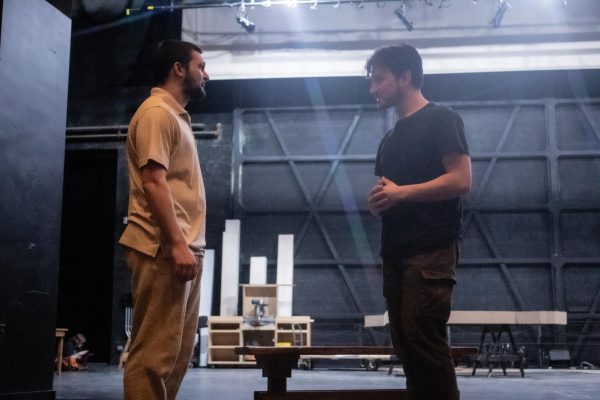Annual student show just one part of non-majors impact on Art Department
This April, art students and non-majors alike will enter their work for a chance to win cash prizes in the Art Department’s annual Student Exhibition.
The competition has been a mainstay of the Art Department for over 40 years and offers current students a chance to enter up to five pieces of recently created work for display in Kleist’s Fawick Art Gallery. Once submitted, artwork is reviewed by department faculty.
Selected pieces are then juried by local artists for over $1000 worth of prizes, including honorable mentions, first, second, third, and the coveted “best-in-show.”
Rich Cihlar, office manager, said the exhibition’s competitive element gives art students an opportunity to understand the reality of their business outside of what he refers to as the “BW Bubble.”
“It’s a subjective kind of field,” said Cihlar. “Some people might love your work, some people might not, and that’s going to be true at any exhibition or gallery you try to apply to, you know. It’s part of the game.”
While the Art Department’s main focus is on students in the department, it’s too small to be completely self-sustaining. With only a handful of students graduating from the department each year (for reference, this year’s graduating class has less than 10), the participation of non-majors in competition and studio classes has become an essential part of the department. Professor Steven Ziebarth, who teaches fine art courses and helps coordinate the Student Exhibition, said this is evident in the department’s studio classes, which fulfill the university’s fine arts requirement.
“A large percentage of any given class is non-majors,” said Ziebarth. “Since we don’t have that many art majors at any given time, the bulk of our teaching is to non-majors.”
But including non-majors doesn’t just add to the department’s numbers, Cihlar says, including their work helps strengthen the level of competition.
“The more you have, the more competitive it becomes,” said Cihlar. “Everybody gets better.”
The inclusion of non-majors has also had a cultural impact on the department. Ziebarth says their involvement gives the department a chance to hear a diversity of opinions.
“The advantage to having non-majors in all of the art classes or in any part of the art department is, I think, the wider array of voices and ideas,” said Ziebarth. “That’s one advantage to having a liberal arts education in conjunction with an arts education. We’re just having a lot of exposure to various ideas.”
Cihlar said that while some students may be reluctant to get involved with the Art Department during their college years, they should consider the transferable skills art can teach.
“I think people are turned off initially because they think, ‘What can I do with a career in the arts?’ but the answer is, you can do anything,” said Cihlar. “We’re problem solvers. We’re creative. We can do so much having the ability to solve visual problems and I think that translates into any field.”
The Student Exhibition will be on display in Fawick Art Gallery through April 26.
The Exponent is looking for financial contributions to support our staff and our newsroom in producing high-quality, well-reported and accurate journalism. Thank you for taking the time to consider supporting our student journalists.












































